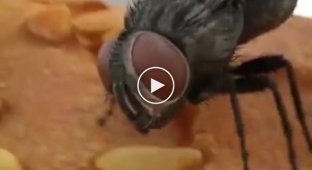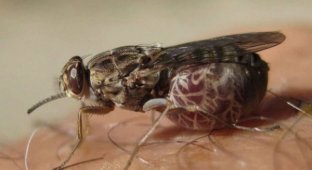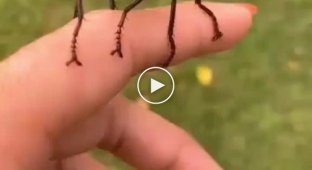Tsetse fly: it turned Africa into hell, but people used radiation (11 photos)
For several centuries now, a tiny creature weighing less than a gram has been leading the list of the deadliest animals in Africa. Not a fearsome lion, hippopotamus or Nile crocodile with jaws like traps, no — a tiny fly! And it has something more interesting than teeth and claws — trypanosomes. 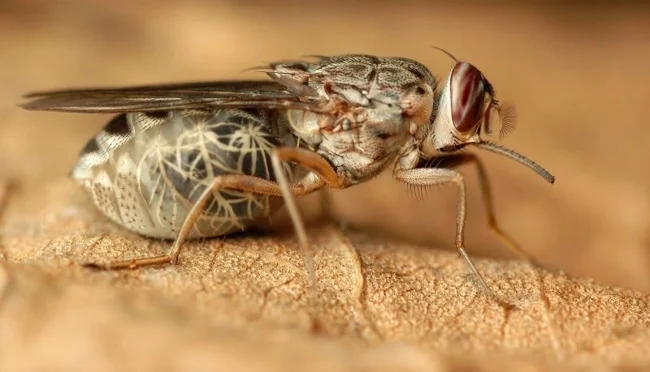
This infection literally hacks the victim's brain and leads to inevitable and very painful death. Because of it, leaders died, villages were emptied and the fates of entire nations were broken. People are so desperate to fight it that they started using radiation! 
Bow your knee before the true ruler of Africa!
The tsetse fly is not a specific insect, but the name of a whole genus of flies, which includes about 30 species. Of these, about 20 are especially dangerous to humans and livestock. A whole winged army! Only a specialist can distinguish a dangerous species from a relatively harmless fly, and even then - under a microscope. It is easier to distinguish tsetse from ordinary annoying buzzers, take a closer look: their wings fold one on top of the other, and the proboscis, like Pinocchio, sticks out forward. 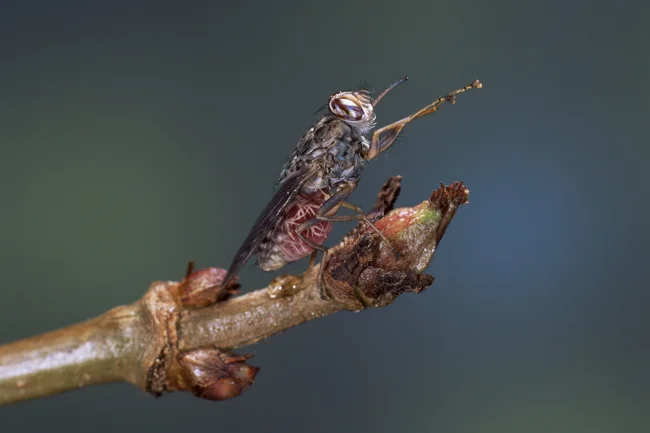
It looks like something out of a horror movie!
But when it comes to a particularly dangerous insect, it would be more logical not to figure out who is who, but to consider every fly in the "infected zone" as potentially dangerous. Because by the time you decide on the name of the species, you will already be bitten - and without timely diagnosis and aggressive treatment, you will not live long. 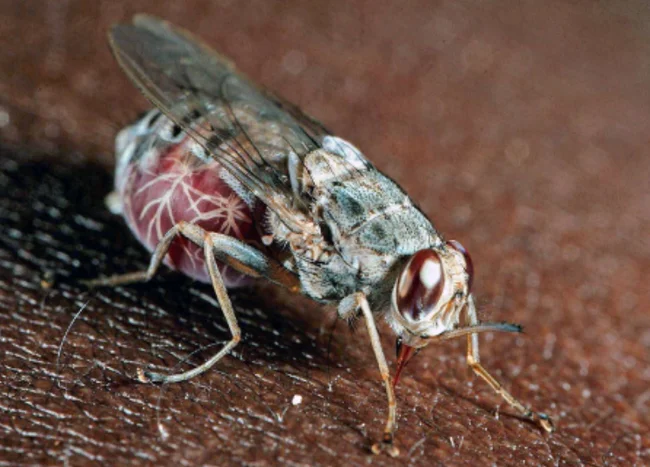
Mmm, this Mary is really very bloody!
But where is this zone? At the moment, tsetse flies are terrorizing tropical Africa, and that is practically everything south of the Sahara. The fly can be found in 36 African countries. You may not even notice a tsetse attack! The parasite does not circle annoyingly over your head, but simply lands and quietly begins to drink blood. And this is the worst thing. Tsetse flies often turn out to be carriers of trypanosomes. It's not "what", but "who" - tiny protozoan parasites that get into the wound along with the fly's saliva, and then into the bloodstream of the host victim. That is, yes, the disease itself is not caused by flies specifically, they are just carriers. But without flies, none of this would happen. 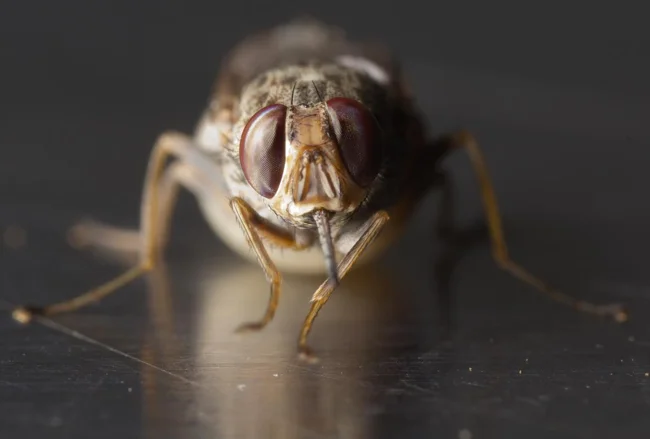
Compared to the tsetse fly, our horseflies are sweethearts and bunnies!
After the bite, an invisible but very intense battle occurs between the host's immune system and trypanosomes, which is scientifically called trypanosomiasis, and in simple terms - sleeping sickness. At first, the parasites simply float in the blood and lymph, eat the nutrients dissolved in them and multiply quickly. To avoid detection by the immune system, trypanosomes slightly change the composition of their protein shell with each division. And so it turns out: the body's protective cells have just learned to identify parasites, when they change their masks again. 
These strings among the balls are trypanosomes.
Thus, trypanosomes can flounder in the blood from several weeks to 3 years - depending on what specific type of protozoa has entered the body. But the result is always the same: over time, a person begins to have problems with sleep and behavior - this means that the parasites have reached the brain, and the end will come soon. The longer the parasites remain undetected, the more likely a fatal outcome. In the later stages, trypanosomes are destroyed with deadly drugs containing arsenic. Such treatment seriously undermines the already weakened health of the victim. Many simply die at this stage. 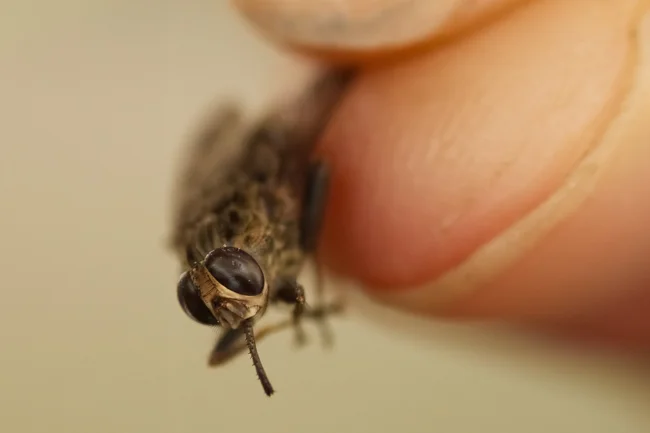
Aha, I got the one that bit!
And while trypanosomes are floating in the blood of a person or animal, he or she will most likely be bitten by a fly again - and maybe more than once. Not because it is special, but female flies need a lot of blood during the breeding season. So trypanosomes get into the body of a healthy fly, and then to a new host. It is an endless deadly vicious circle. Moreover, the winged ones themselves do not suffer or die from sleeping sickness. Firstly, the flies live too short a life, and secondly, trypanosomes live in the intestines and salivary glands of the insect, but do not climb into its head. 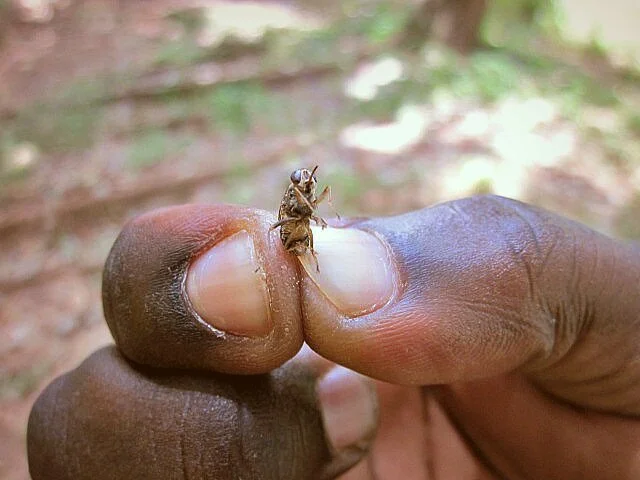
Better to have cockroaches in the head than trypanosomes!
Since the beginning of the 20th century, people have declared war on tsetse flies as the main and only carriers of the disease. First there was fire. Since flies love shade, all the trees had to be mowed down and burned. Of course, that didn't work. Then there was blood. Pest control agents suggested that tsetse's main food source was large ungulates. So they slaughtered antelopes, buffalo, wild boars and others. But the fly is absolutely indiscriminate in its tastes: with the disappearance of mammals, the parasite switched to birds, lizards and all sorts of small animals. Then chemistry came into play. It seemed like the most effective solution, so people sprayed chemicals from airplanes, sprayed trees, set traps and prayed. The flies died, but after a while new ones flew in to take their place, and the disease returned. 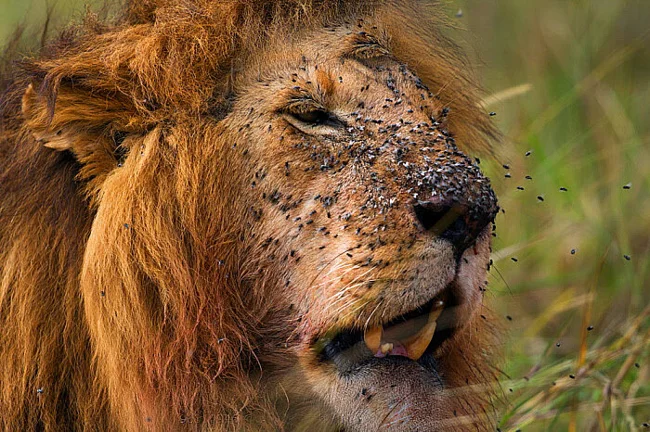
Both kings and their subjects are equal before the power of the disease.
And then radiation came into play. No, no one bombed the flies, the scientists were very clever. They caught flies, bred them and selected only the males. Thousands, millions of males! And then they irradiated them. Under the influence of radiation, the flies became sterile, but this fact did not affect their libido in any way. Then the suitors were loaded onto a plane and released in places where wild flies live. The idea worked like a charm: the males quickly found local chicks and performed their marital duty, but the females did not become pregnant and did not give birth to a new generation of flies. 
The tsetse's swollen abdomen tells us that a larva is maturing there.
The tsetse has a very unusual way of reproducing. Perhaps that is why the radiation method worked so effectively. The fact is that the female does not lay a bunch of eggs at once, but carries a full pregnancy. Only one larva develops at a time: it will spend about 9 days in the mother's womb, feeding on the secretion of the gland in the uterus. Then the female will give life to the baby, it will burrow into the ground, pupate and emerge as an adult fly. 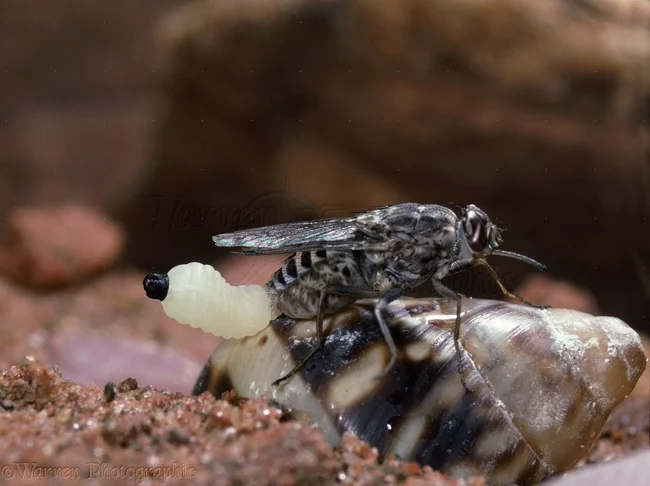
Only one, but a huge baby!
The tsetse produces larvae every 10-12 days in a row for 3 months. In order not to search for a partner in a hurry each time, wasting precious time, the females mate with only one male during their life. She will use his genetic material gradually, as the eggs mature. And if he is sterile, then there will be no new generation. The radioactive method of fighting tsetse flies has given amazing results. If in 1990 the number of infected people reached 40,000, then in 2018 there were less than 1,000! In some regions, trypanosomiasis has completely disappeared as a phenomenon - and this is without any chemicals, burning of forests and destruction of animals. Only science!












